Venta-1 Satellite Overview
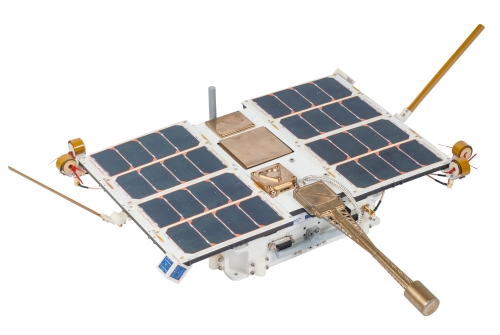
Venta-1 is a nanosatellite developed by Ventspils University, Latvia equipped with two Automatic Identification System (AIS) receivers, a laser retroreflector, an optical imager and technology demonstration payloads.
The spacecraft weighs about 7.5 Kilograms and is 40 by 40 by 10 centimeters in size. Assistance in the development of the satellite was provided by the University of Applied Sciences Bremen and OHB Systems.
Structurally, Venta-1 consists of a series of seven trays fulfilling six different functions. The uppermost assembly hosts the solar cells, magnetometer and inertial measurement unit as well as communication antennas. Below that is a technology demonstration demo incorporating different plug-and-play devices from Sweden and the U.S. including a Langmuir Probe for magnetic measurements in orbit and a TDRSS Transponder to connect with the geostationary communications satellites via beacon signals.
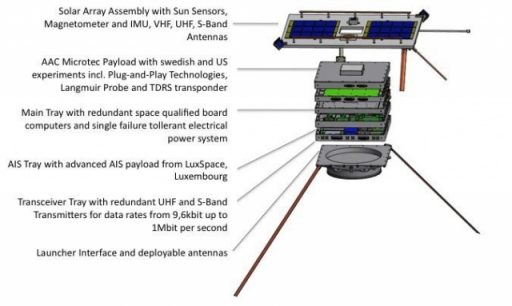
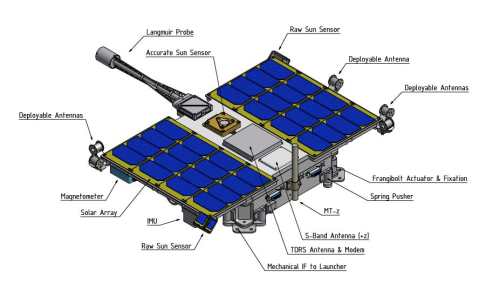
Two trays facilitate the satellite’s core systems comprising redundant, space-qualified onboard computers and the electrical power system. Below the main trays sits the AIS tray hosting the satellite’s main payload and one layer below is the communications tray housing the transceivers feeding the different antennas. At the aft end of the satellite sits the launch vehicle interface which also hosts a pair of deployable antennas.
Venta-1 uses body-mounted solar panels to generate up to 10 Watts of power. Attitude control is accomplished with a magnetometer and inertial measurement unit to deliver orientation & body rate data. Electromagnets are used for basic pointing control by generating torque through activation of the magnets in Earth’s magnetic field sensed by the magnetometer. The satellite uses VHF/UHF and S-Band communication systems with a downlink data rate of 9.6kbit/s on UHF and 1Mbit/s on S-Band which is used for the downlink of payload data.
The Automatic Identification System is used by sea vessels that send and receive VHF messages containing identification, position, course and speed information to allow the monitoring of vessel movements and collision avoidance as well as alerting in the event of sudden speed changes.
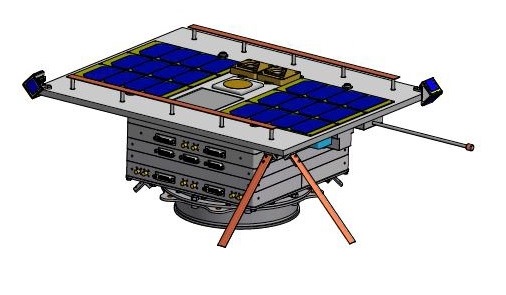
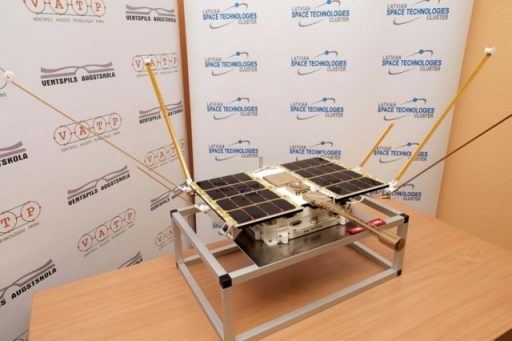
These signals can be transmitted from ship-to-ship and ship-to-shore to allow the monitoring of a local area, but deploying space-based AIS terminals allows a broad coverage and data relay to ground stations for monitoring of large sea areas. However, due to the large footprint of satellites, overlapping and signal collisions become a problem, especially for frequented traffic routes.
Venta-1 is equipped with two LuxSpace SATAIS receivers and an onboard data storage system. The AIS terminals weigh about 1.5 Kilograms and have an expected lifetime of seven years. About 80MB of data will be accumulated in 24 hours; AIS messages are downlinked to a ground station in Bremen, Germany and a ground station in Latvia.
Two optical cameras are used to acquire images of Earth that will be geo-referenced with data provided by a spaceborne GPS receiver. Venta-1 also hosts an intersatellite communications terminal that will attempt to establish two-way communications between the satellite and the Orbcomm and Iridium communication constellations operated in Low Earth Orbit.
The Venta-1 satellite will be launched by an Indian Polar Satellite Launch Vehicle as a secondary payload. It will be stacked together with the Max Valier Sat and the two will only separate after being deployed into orbit as a single unit.
